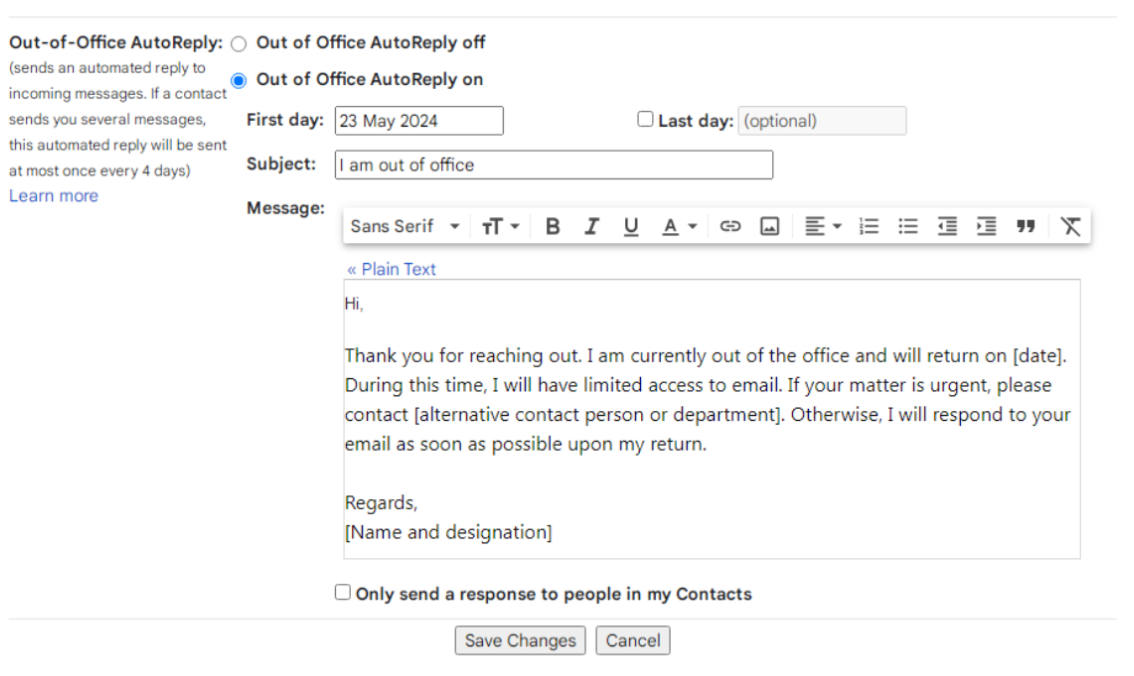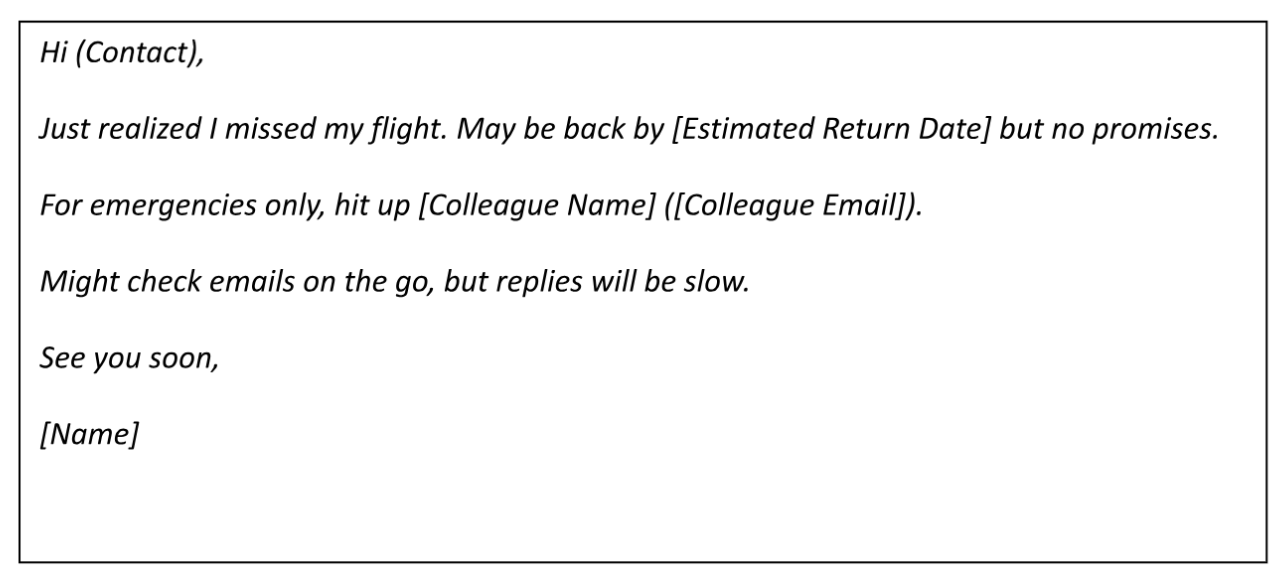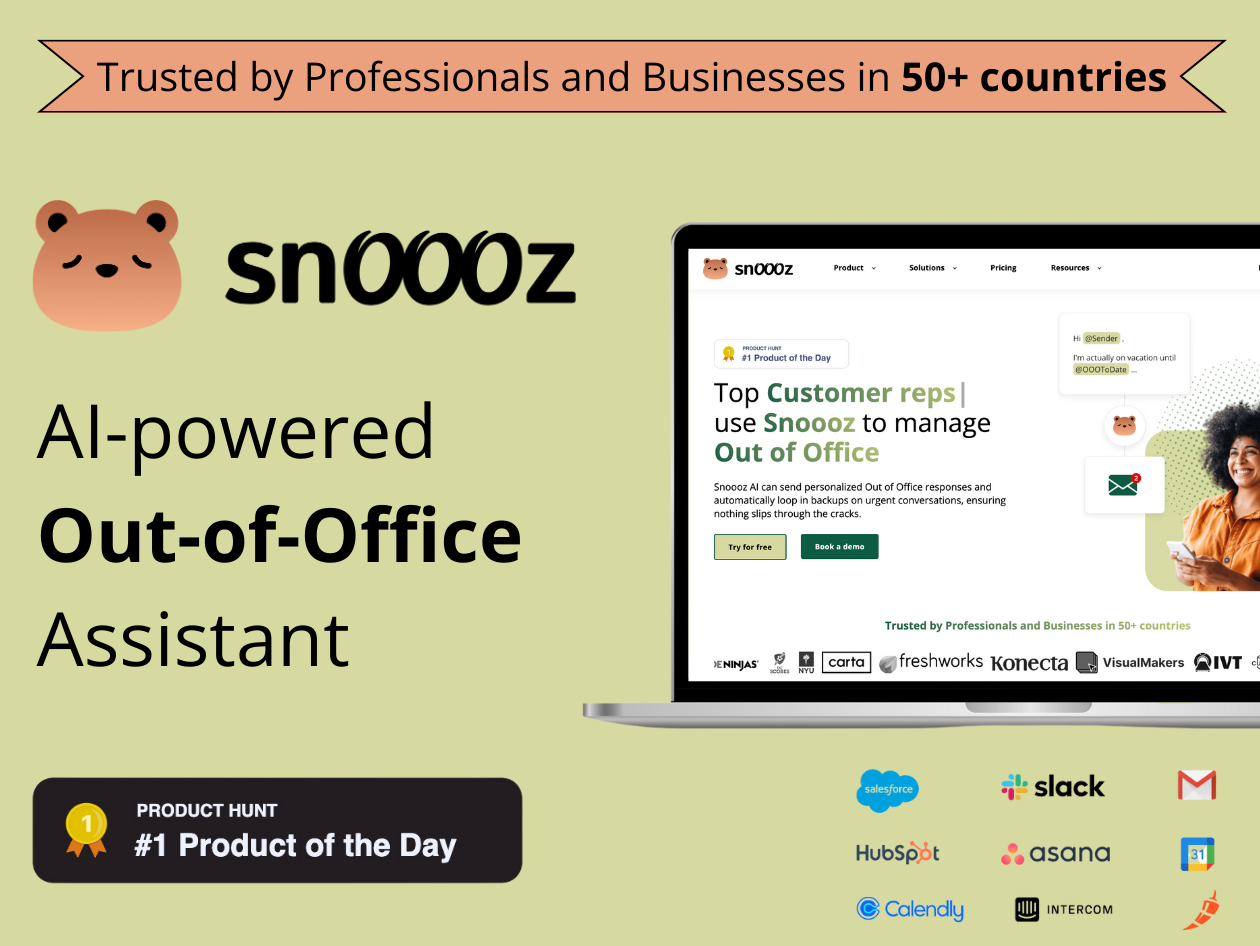Last year, Microsoft joined several companies offering employees unlimited time off. This flexible work model has become a powerful recruiting tool, as it attracts professionals accustomed to the new normal, which encompasses remote and hybrid work structures, more leaves, flexible hours, and other perks.
But what happens if several employees take leaves together or a critical team member is unavailable during business hours due to an emergency or planned absence? An automated OOO (out-of-office) response system can prevent email overload and miscommunication.
In these circumstances, a responsive out-of-office system becomes a viable asynchronous communication tool.
In this blog, we’ll explore what OOO means at work for project management and how it can help managers empower their teams.
What Does OOO Mean At Work?
'OOO' stands for 'Out Of Office.’ It's a common abbreviation used in automated replies to let senders know you're unavailable and likely won't respond to emails right away.
Typically, OOO messages are used when someone is on vacation, taking a sick day, attending a conference, or otherwise away from work for an extended period.
Today, conventional OOO messages often fall short. Manually updating them is time-consuming, and generic messages can leave your team or clients in the dark, leading to confusion, delays, and, ultimately, a dip in overall productivity.
Fortunately, there's a smarter way. An automated response tool like Snoooz can prevent miscommunication and missed leads during employee absences. The tool offers several features that can significantly improve communication and efficiency for you and your team.
Why Generic Autoresponders Don’t Cut It
While autoresponders can inform recipients about absences, they are quite generic. Take Gmail's Out-of-Office AutoReply, for instance. Here are some ways it falls short for teams:
It sends the same OOO message to everyone. Unfortunately, Gmail doesn't have a feature that allows users to write specific OOO messages for different contacts. It's an all-or-nothing approach. You have to access Gmail settings enable "Vacation responder" under the "Vacation responder" section, and write out the OOO message:

You can reply to your contacts but not people outside your organization. Plus, you’ll have to do most of the legwork, which can be pretty time-consuming for you and your team.
Imagine Sarah, your marketing manager, is going on a week-long vacation. Her team is working on several crucial projects, each with different deadlines. Ideally, Sarah wants to provide each team member with specific instructions and contact information for their project while she's away.
Here's how Gmail's autoresponder falls short. Sarah can't write personalized OOO messages for each project, forcing her to choose between:
Generic Message: A one-size-fits-all message might lack the specific details each team member needs.
Individual Emails: Manually sending emails with personalized instructions for each project can be time-consuming, especially for large teams.
In this case, Sarah has to follow up with each team member when she returns. This wastes time creates bottlenecks, and compromises project deadlines. Your email shouldn’t be a to-do list!
It Has a One-Size-Fits-All Approach
Imagine this scenario: A customer frustrated with a recent service issue fires off an email demanding answers. They expect a prompt and personalized response. However, they receive a generic autoresponder message informing them you're out of the office.
The impersonal response does little to address their specific concern and makes things worse. Similarly, here are more ways that a one-size-fits-all automated response can be detrimental to customer service:
Lost Opportunities: A customer with a billing question might receive the same response as someone inquiring about a new product. This lack of nuance fails to capitalize on potential sales opportunities or address urgent issues promptly.
Heightened Frustration: An upset customer with a technical problem might already be at their wit's end. Receiving a generic autoresponder further fuels their frustration, potentially leading to negative online reviews or a costly exit from your services.
It Cannot Determine Message Intent
Gmail’s autoresponder cannot discern message intent. A client reaching out with a pressing issue receives the same generic response as a business partner wishing you a happy birthday.
Furthermore, the autoresponder has limited customization options. Beyond basic date ranges and contact details, there is little else. This creates a sense of detachment and can leave recipients feeling like they haven't truly connected.
An informed and authentic out-of-office message should acknowledge the email's content and offer alternative solutions, like suggesting a colleague for urgent matters. Generic autoresponders, like Gmail’s, prioritize basic functionality over genuine communication. The result is inauthentic messages that can trigger upset recipients. Plus, a quick and impersonal OOO message may be all they can manage if a team member is late for their flight. Imagine this going out to an important client:

Adding salt to the wound, your client will be left in the lurch if she typed in an incorrect name or email address.
Snoooz: The Smarter Way to Manage Out-of-Office Communication
How to manage workflow in the office while you or a team member is out of office?
Easy! Use Snoooz.

Its advanced features address the limitations of traditional autoresponders with tailored, efficient, and responsive solutions. Below are examples illustrating how each feature enhances email management and improves overall communication:
1. Rules for Segmentation and Custom Responses
Sarah, the marketing manager, is on vacation. Her team is working on several projects, and each requires specific instructions. With Snoooz, Sarah can create rules to segment incoming emails:
Customer Emails: If a customer emails using Snoooz, the tool responds with specific contact information and an assurance that a team member will follow up shortly.
Internal Team Emails: For emails from her team, Snoooz sends detailed instructions related to ongoing projects and the contact information of the designated team lead.
Benefit: This ensures all stakeholders receive relevant information without needing individual emails.
2. Sentiment Detection
A customer sends an email expressing frustration over a service issue. Snoooz detects the negative sentiment and immediately flags the email, looping in a senior customer service representative to address the issue promptly.
Benefit: This proactive approach prevents customer churn and demonstrates a commitment to swift resolutions, improving customer satisfaction.
3. Auto-Forwarding
While Sarah is away, a potential client inquires about a new marketing campaign. Snoooz automatically forwards the email to the designated backup team member in the sales department, ensuring that the client's inquiry is addressed without delay.
Benefit: This ensures that important opportunities are not missed and customer engagement continues seamlessly.
4. Auto-Ignore
During Sarah's absence, she receives numerous promotional emails and newsletters. Snoooz detects these from mailing lists and doesn’t send an auto response.
Benefit: This prevents unnecessary autoresponder emails from being sent, reduces email clutter, and focuses resources on critical communications.
Benefits of Snoooz Features
Efficiency: Snoooz’s automated segmentation, sentiment detection, and auto-forwarding reduce the time spent on email management, allowing team members to focus on their core responsibilities.
Improved Customer Experience: By providing personalized responses and promptly addressing urgent issues, Snoooz enhances the customer experience, increasing satisfaction and loyalty.
Reduces Frustration: Snoooz’s auto-ignore feature clears out non-critical emails, reducing frustration and ensuring important messages aren’t missed.
Streamlined Communication: Snoooz ensures your emails get to the right people and involve the right team members. This keeps communication clear and prevents costly delays, even when a team member is out of the office.
In other words, Snoooz’s advanced features provide a smart alternative to traditional autoresponders. They overcome the usual limitations and greatly improve the efficiency and effectiveness of email communication within teams.
Tips for Managing OOO Employees
Having team members out of the office doesn't have to disrupt productivity. Here's how to ensure smooth sailing during absences:
- Plan Ahead: Before their departure, discuss workload and deadlines. Can tasks be delegated or temporarily paused? Encourage clear documentation of ongoing projects.
- Craft a Clear OOO Message: A good autoresponder outlines their absence, provides a timeframe for return, and offers alternative contact information for urgent matters. Here are some great templates you can steal.
- Set Up Team Coverage: Identify colleagues who can handle essential tasks in their absence. Brief them on priorities and provide access to relevant resources.
- Internal Communication: Let your team know who's covering what and how to handle communication during the absence. Consider a dedicated channel for questions or updates.
- Stay Connected (Optional): Depending on the length of the absence and role, the OOO employee might offer to check emails periodically and address critical issues.
By planning and clear communication, you can minimize disruption and ensure your team remains productive while an employee is away. A proactive, automated response tool like Snoooz can make this easier.